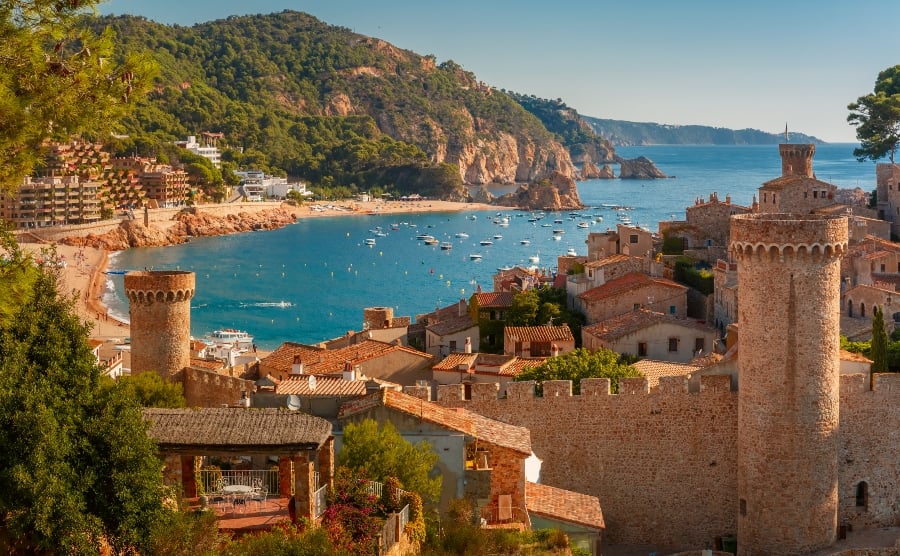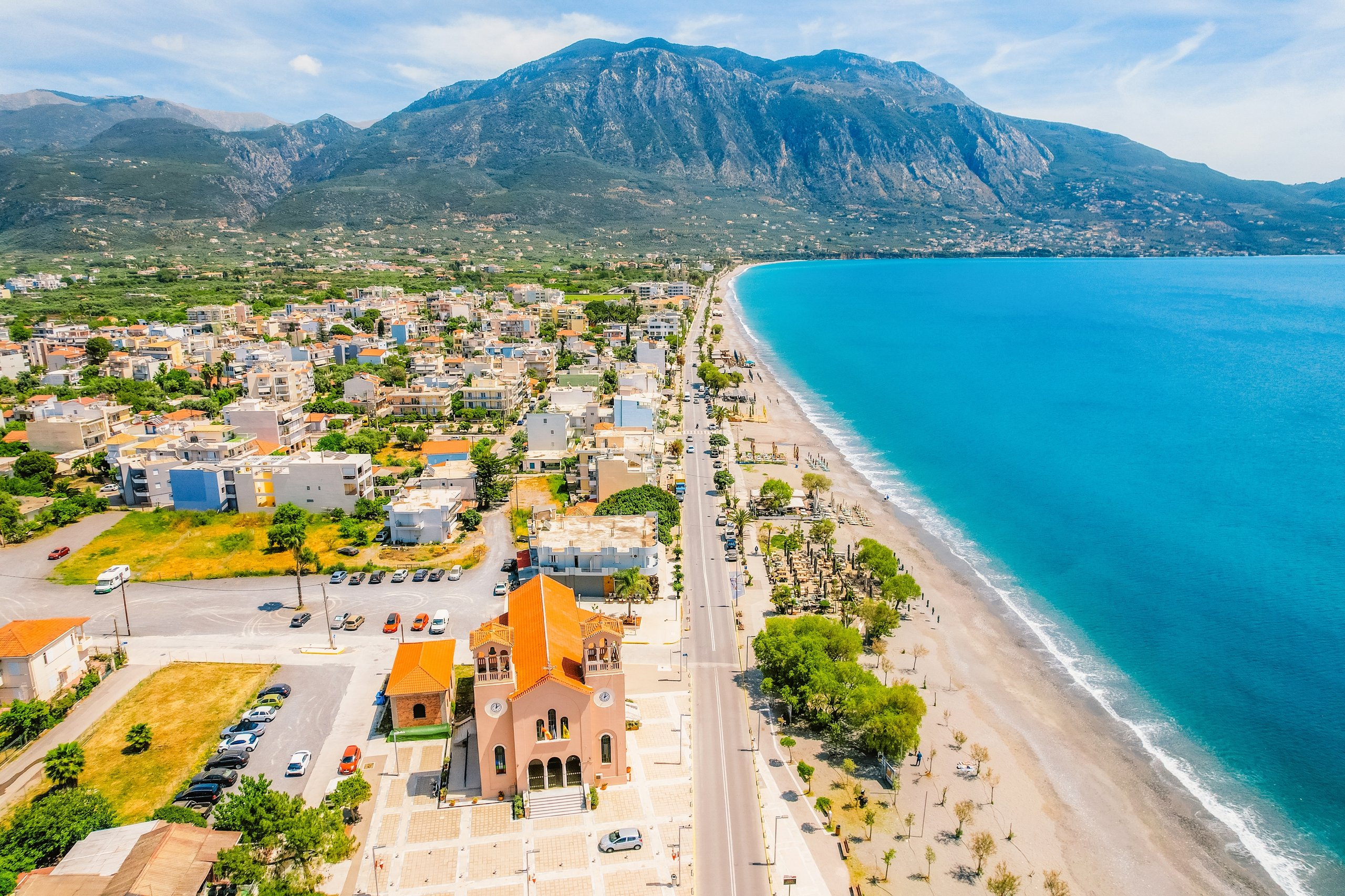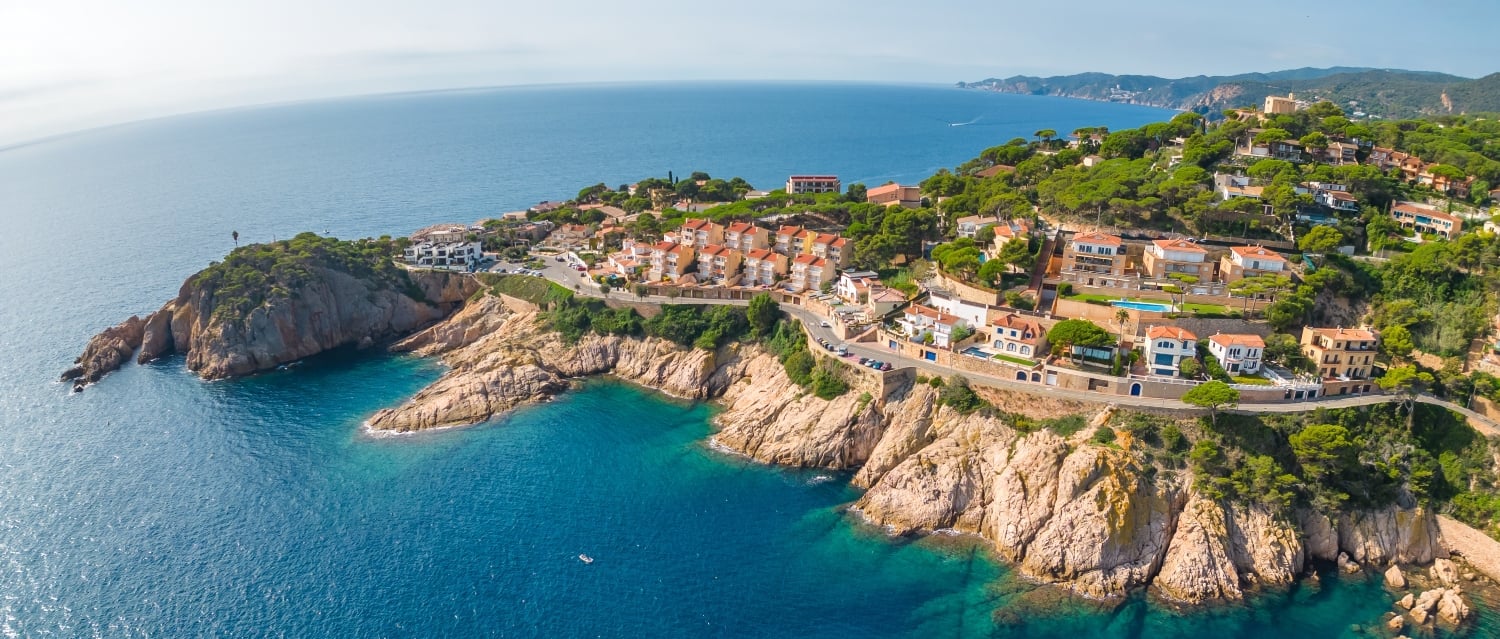The Costa Brava – literally “rugged coast” – is where golden beaches meet pine-scented hills, and pretty fishing villages mingle with cosmopolitan charm. It’s long been loved by Spanish families and overseas buyers alike for its year-round liveability, proximity to France and Barcelona, and an enviable mix of sun, scenery and sophistication. If you’re looking to buy a home here, this guide will help you understand the property market, explore top locations and take all the right steps to buy with confidence.
Located on Spain’s northeastern coast, the Costa Brava is known for its wild natural beauty and refined Catalonian culture. It’s easily reached from the UK and across Europe, yet feels a world away, with its mix of lively fishing ports, peaceful hilltop villages and golden beaches backed by pine-covered cliffs. From stylish marina apartments to centuries-old villas, the property options here are as varied as the landscape. And with the right guidance, buying on the Costa Brava can be more than just a dream – it can be your doorway to a better life abroad.
Download the Spain Buying Guide
Contents
Why buy in the Costa Brava?
You’ll find the Costa Brava stretching from Blanes to the French border – a 120-kilometre sweep of rugged coastline with sandy coves, pine-cloaked hills and clear waters. Unlike southern hotspots, this corner of Catalonia has four distinct seasons and an upmarket feel that attracts discerning buyers.
There’s a blend of beach life and mountain air, Michelin-starred dining and rural calm. It’s not unusual to spend a morning skiing in the Pyrenees and the afternoon swimming in the Med. Outdoor lovers have hiking trails, golf courses, and water sports galore, while those after culture can explore Roman ruins and charming old towns. And if you ever need a big city fix, Barcelona is just down the road.
Is Costa Brava property a good investment?
Yes – with a few caveats. The Costa Brava’s year-round accessibility by air, road and rail, combined with its appeal to both local and international buyers, means demand stays strong. Holiday lets are popular, especially among Barcelona-based families seeking summer escapes.
However, this popularity pushes prices up. In coastal areas, expect to pay over €4,000 per square metre, making it one of Spain’s most expensive regions. Resale homes under €1m attract a 10% purchase tax, rising to 11% above that – among the highest in Spain.
That said, if you’re renting the property out in summer and using it yourself in cooler months, the balance can work well. Just remember that outside of June to August, bookings will drop – temperatures are milder than in southern Spain.
Many buyers choose the Costa Brava for lifestyle first, investment second – particularly retirees, remote workers and those seeking a base for extended family holidays. But it’s possible to achieve both: steady appreciation, plus personal enjoyment.

What does the property market look like?
The Costa Brava leans towards resales and renovation properties, thanks to careful planning controls. That said, new builds – including high-spec villas – are available, particularly for buyers with €1m+ budgets. Inland, renovation projects or land can start under €100,000.
Here’s a snapshot of typical prices:
| Property type | Average price range | Notes |
|---|---|---|
| Small apartment (coastal) | From €150,000 | Ideal for lock-up-and-leave or holiday lets |
| Family villa with garden and pool | Around €300,000–€600,000 | Depends on size, location and condition |
| New-build designer villa | From €1m+ | Targeted at luxury international buyers |
| Inland renovation project | Under €100,000 | Requires time and budget to modernise |
You’ll find fewer developments and more one-off homes than in southern Spain. Many have retained their local character, with Catalan roof tiles, shady terraces and mountain views. That scarcity is part of their appeal – and their resilience in the property market.
What’s the climate like?
This is still the Mediterranean – just a touch milder than the south. Summers (June-August) are hot but not oppressive, with highs of around 30°C in July. Winters are cooler, averaging 9°C in January, and you might even see frost inland.
Sea temperatures hover around 23°C from June to October – perfect for swimming. Rain is minimal: The region sees just 4mm in January compared to London’s 52mm.
You can still enjoy long lunches outdoors in spring and autumn. Unlike the sweltering south, the Costa Brava keeps its crispness. And that means properties here work for year-round living – not just high season.
How to get there
You’ve got two good airport options: Girona (smaller and closer to the north) and Barcelona El Prat (Spain’s second largest). Both have frequent flights from the UK and elsewhere in Europe, with Barcelona also receiving long-haul flights.
You can reach the Costa Brava from Paris or Switzerland in less than 10 hours. The region is well-connected by road, as well as high-speed trains into Girona and Barcelona.
Where to buy: 6 popular towns
- Roses: combines beach life with great restaurants (including Michelin stars), water sports and natural beauty. The Bay of Roses is especially scenic, with calm waters and quiet coves.
- Empuriabrava: known as “Little Venice”, this marina town has a vast canal network and a strong expat community. It’s great for boating, golf and leisurely living.
- L’Escala: a working fishing town that swells in summer. Riells beach is perfect for families, and the anchovies here are world-famous.
- L’Estartit: popular with overseas buyers, it has a long beach, a buzzing marina and hosts an annual jazz festival.
- Begur: a medieval hilltop town with panoramic views and a short drive to some of the region’s best coves, including Sa Riera.
- Tossa de Mar: With a castle rising above the beach, pine forests and 14km of coastline, it’s postcard-perfect and has a strong year-round community.
Beyond the hotspots, there are dozens of quieter villages tucked into the hills or overlooking small coves. In winter, some feel near-deserted – romantic to some, too quiet for others. If you want year-round life, choose somewhere within easy reach of a larger town.
Steps to buying property in the Costa Brava
- Search online: shortlist areas and properties that match your lifestyle and budget goals. Prioritise features like walkability, rental potential, or views.
- Build your team: choose a local estate agent, an English-speaking lawyer, and a currency expert such as Smart Currency Exchange to help transfer your funds securely. You might also want a financial advisor or mortgage broker.
- Book a viewing trip: visit properties in person, ideally across different towns. Travel times can vary, so plan your itinerary carefully. Virtual tours can also help you shortlist.
- Make an offer: if the seller accepts, you’ll sign a reservation contract and pay a fee to take the property off the market. Then you’ll pay the deposit (typically 10%).
- Finalise the purchase: your lawyer will arrange the notary appointment, and you’ll sign the escritura pública (final contract) and pay the balance, including purchase tax, notary, legal and registration fees.
Living in the Costa Brava
What’s life like once the sale is complete? Expect a blend of beach days, local festivals and long lazy lunches. Catalonia has a proud identity, so you’ll hear both Spanish and Catalan spoken. The food scene is a highlight – from rustic seafood to avant-garde cuisine.
Shops and restaurants generally stay open year-round in larger towns. Healthcare is excellent and fibre internet is available in most places – ideal for remote working. If you’re bringing pets or kids, you’ll find plenty of green space, and international schools near Girona and Barcelona.
Many buyers split their time here – summers on the coast, winters back in the UK or inland. But increasing numbers are making the Costa Brava their year-round base, drawn by its slower pace and sense of place.
Frequently asked questions
Everyday living costs are reasonable, but property on the Costa Brava sits at the premium end of Spain’s market – with good reason. Strong demand means values hold firm, especially in sought-after coastal hotspots where prices can exceed €4,000 per square metre. Inland towns and villages, however, offer more affordable options. Many buyers offset expenses by renting during the busy summer season and enjoying their homes themselves in the quieter months.
That depends on your lifestyle. Empuriabrava is popular with expats and boating enthusiasts, Roses has excellent dining and water sports, Begur offers medieval charm with access to quiet coves and Tossa de Mar provides both a historic centre and a year-round community. If you want peace and value, inland villages near Girona are worth exploring.
Many would say Tossa de Mar, thanks to its walled old town and scenic beaches but Begur and Cadaqués are also frequently ranked among the most beautiful. Roses is another favourite for its bay and food scene. Each has its own appeal, so the “nicest” really depends on whether you prioritise history, beach life, gastronomy or community.
You might also like:









